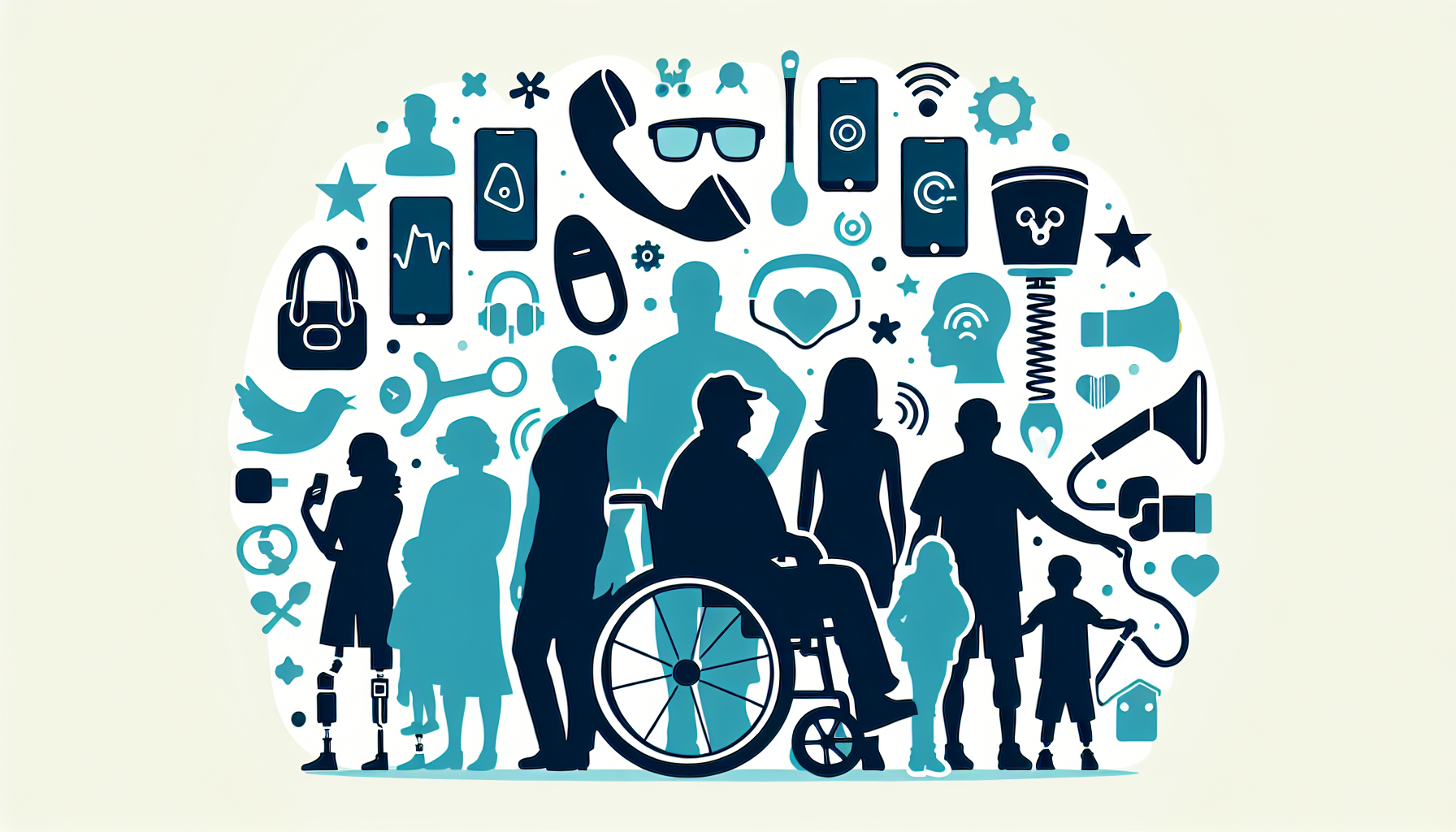Definition
Assistive Technology refers to various tools, equipment, or systems specifically designed to improve or maintain the functional capabilities of individuals with disabilities. These technologies aim to enhance daily living activities, support communication, and promote independence for disabled veterans. The VA benefits provide access to such technologies as a way to assist veterans in overcoming physical or cognitive limitations resulting from service-related injuries or conditions.
Key Takeaways
- Assistive Technology refers to any device or equipment that helps veterans with disabilities to maintain or improve their independence, productivity, and quality of life.
- The VA offers various assistive technology services, including assessment, funding, training, and follow-up for eligible veterans, helping them to adapt and better integrate into their homes, workplace, and community.
- Examples of assistive technology provided through the VA can include mobility aids, communication devices, hearing aids, adaptive computer software, and home modifications, tailored to meet the unique needs and preferences of each veteran.
Importance
Assistive Technology is an essential term within the context of VA benefits as it refers to an array of devices, tools, or services designed to facilitate, maintain, or enhance functional capabilities of veterans with disabilities.
These technologies significantly contribute to fostering independence, self-sufficiency, and improved quality of life for affected veterans.
By incorporating assistive technology within the scope of VA benefits, the Department of Veterans Affairs demonstrates its commitment to prioritizing the diverse needs of veterans and their families, ensuring that they have access to necessary resources and support systems that empower them to overcome physical and cognitive limitations and lead fulfilling, barrier-free lives.
Explanation
Assistive technology serves a crucial purpose within the realm of VA benefits as it aims to empower and enhance the lives of veterans with disabilities, enabling them to lead more independent and fulfilling lives. These technologies, designed with the specific needs of disabled veterans in mind, contribute significantly to their overall well-being and integration into society.
They facilitate the execution of daily tasks and empower veterans by bridging the gap created by their disabilities, allowing them to harness their full potential and live life without any limitations. The application of assistive technology spans across various facets of an individual’s life, ranging from mobility aids and communication devices to cognitive tools and environmentally friendly technologies.
By providing the necessary support and enhancements, veterans are better equipped to navigate various challenges they might face in their personal and professional lives. It is crucial to understand that such devices or systems can be customized to accommodate the unique requirements of each veteran, addressing their specific challenges.
Consequently, assistive technology adds value and purpose to the lives of those who have made invaluable sacrifices in their service to the nation, ensuring that they have access to the support and resources necessary to thrive in every aspect of their lives.
Examples of Assistive Technology
Assistive Technology refers to devices or equipment that help individuals with disabilities or injuries maintain, increase, or improve their overall functioning and independence. The VA (Department of Veterans Affairs) offers various benefits to veterans to help them access these technologies. Here are three real-world examples of assistive technology that the VA may help veterans obtain:
Mobility Aids: Many veterans face mobility issues due to combat or service-connected injuries. This can include using wheelchairs, electric scooters, or prosthetics to help improve their mobility. The VA offers financial support to eligible veterans for acquiring these assistive devices.
Communication Aids: Veterans with speech, hearing, or cognitive impairments can benefit from communication aids. These can range from speech-generating devices, hearing aids, and specialized telephone equipment to communication software, screen readers, and text-to-speech applications. The VA offers Veterans the means to access these assistive technologies to enhance their communication abilities.
Home Modification Technologies: Many veterans require adaptive modifications in their homes to help them navigate safely and perform daily activities independently. Some examples of home modification technologies include automated doors, stairlifts, walk-in bathtubs, grab bars, and adapted kitchen appliances. The VA provides grants such as the Specially Adapted Housing (SAH) Grant or the Special Housing Adaptation (SHA) Grant to help veterans afford these necessary changes in their homes.
FAQ: VA Benefits for Assistive Technology
What is Assistive Technology, and how does it relate to VA benefits?
Assistive Technology (AT) refers to devices, equipment, software, or services that help individuals with disabilities to perform tasks that they would otherwise find difficult or impossible to accomplish. VA benefits may provide assistance in acquiring these technologies for eligible veterans with disabilities to aid in their daily lives, education, training, and employment.
Who is eligible for Assistive Technology benefits through the VA?
Veterans with disabilities who meet specific requirements, such as having a VA service-connected disability rating, may be eligible to receive Assistive Technology benefits. In general, veterans should be under VA health care or enrolled in a VA program to be considered for AT benefits.
What types of Assistive Technology are covered by VA benefits?
VA benefits can cover a variety of AT, including but not limited to: adaptive equipment, computer software, prosthetic devices, hearing aids, mobility aids, and home modifications. The specific type of AT coverage depends on the veteran’s unique needs and eligibility criteria.
How do I apply for Assistive Technology benefits through the VA?
To apply for AT benefits, you should contact your local VA office, your VA health care provider, or a VA Vocational Rehabilitation counselor. They can help guide you through the process, assess your needs, and determine your eligibility. You can also explore AT-related services and resources on the VA website.
What is the process for obtaining Assistive Technology under VA benefits?
Once you have applied and are deemed eligible for AT benefits, a VA representative will work with you to assess your needs and recommend the appropriate Assistive Technology devices or services. The VA will then provide the recommended AT, support you in learning how to use it, and monitor your progress in using the technologies to achieve your personal goals.
Are there any additional resources for veterans to learn more about Assistive Technology?
Yes, several resources are available for veterans to learn more about AT and related services. The VA’s Assistive Technology website offers extensive information, as well as other organizations like the Rehabilitation Engineering and Assistive Technology Society of North America (RESNA), National Assistive Technology Act Technical Assistance and Training (AT3) Center, and the National Disabled Veterans Associations. You can also ask your VA health care provider for more information and guidance on AT and available resources.
Related VA Benefit Terms
- Adaptive Equipment
- Rehabilitation Engineering
- Prosthetics and Orthotics
- Home Modification
- Communication Aids
Sources for More Information
- U.S. Department of Veterans Affairs
- Assistive Technology Industry Association (ATIA)
- Rehabilitation Engineering and Assistive Technology Society of North America (RESNA)
- Association of Assistive Technology Act Programs (ATAP)
 Benefits.com Advisors
Benefits.com Advisors
With expertise spanning local, state, and federal benefit programs, our team is dedicated to guiding individuals towards the perfect program tailored to their unique circumstances.
Rise to the top with Peak Benefits!
Join our Peak Benefits Newsletter for the latest news, resources, and offers on all things government benefits.




















